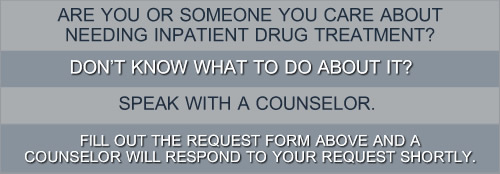
Understanding Inpatient Drug Treatment
What Is Inpatient Drug Rehab Treatment?
Inpatient drug rehab treatment, a shortened version of "Inpatient Drug Rehab" is a residential living facility in which drug dependent and drug addicted users can get the help they need to start having a normal life without feeling the drive or need for the drug. Inpatient drug facilities treat for many drugs, from the legal to the illegal. For instance, a patient could be in the facility because he or she is addicted to alcohol. Other popular drugs that can be treated in inpatient drug rehab facilities are marijuana, cocaine, MDMA and heroin.
It must be emphasized that not all treatment in inpatient drug facilities is the same. Many things are taken into account when treating someone for a drug dependency or drug addiction. One of these factors is deciding the type of addiction the patient is suffering from. Although some drugs are psychologically addictive, quitting them can cause the patient some distressing symptoms like headaches, dizziness and anxiety. This means that although the patient is not physically addictive to the drug, the body feels like it needs the drug to function. Some drugs are physically addictive and cause psychological addiction, too. Whatever addiction the patient is suffering, only a mental health professional that has experience dealing with addiction can decide on the right course of action for a patient and has to take into account his or her background, including gender, social and economic background, family support network and how much the problem of addiction has affected the patient and those surrounding him or her.
What Is The Cost of Rehab?
Rehab can seem like an expensive option but patients and their families must consider that the patient is paying for the best treatment possible while allowing the facility to operate and provide the patient with a number of luxuries. The patient is paying for service and treatment around the clock which can allow him or her to completely heal and get away from an environment and a thought process that might lead to using again.
Generally the cost of rehab varies between five thousand to a hundred thousand dollars - the smaller facilities are just as good, but the more expensive ones can provide the user with more luxuries and distractions. The process of inpatient rehab lasts twenty eight days, regardless of the drug, and the patient can choose to stay on further after that time is done in some facilities. There are usually around five days of detox for the patient, followed by seven days of planning in which the medical staff will get together to discuss the appropriate treatment plan for a particular patient. inpatient rehab treatment facilities usually accept insurance.
What Are The Benefits of Drug Rehab?
The benefits of drug addiction are both short-term and long-term. In the first few weeks after the addict stops consuming the drug there are marked improvements in physical appearance including a gain of weight lost, skin clearing up, better digestion and feeling generally better and more energized. Physically, in the long term, the organs which were affected by the drug consumed by the user. Unfortunately, depending on the drug and how long it has been used for, some organs never completely heal but doctors at the inpatient treatment facility can give a patient the right medication to manage pain. Addicts start to feel the benefits of quitting about a week after they have gone through the detoxification process and are in the process of treatment.
Some other long term benefits of drug addiction treatment involves the patient being able to function in their social and family life without feeling the need to take the drug. This does not mean that the user will never again feel cravings, but rather that the drug treatment facility will give the users the tools needed so that he or she can have a handle on these cravings and does not become drug addicted or dependent again. Many treatment centers have different philosophies and techniques when treating drug addicts but they are all about ensuring that an individual can be reintegrated back into his or her life without taking drugs.
What Services Are There In Residential Drug Treatment?
There are many types of services and therapies that users can get, depending on the facility they are in, the drug or drugs they are dependent on, and many other factors which can only be explained by a practicing physician that specializes in mental health and addiction issues.
The first thing that happens when a patient checks into a residential treatment facility is an assessment in which the patient sits down with professionals and they come up with a treatment plan adequate for the patient. The next step is generally individual or group therapy and the facility might also offer alcohol or drug education for the patient and his or her family. Some patients, like teenage patients, may need to be treated in group therapy with their family members. The doctors will decide the best plan to treat any particular patient and carry that out according to the patient's need to ensure a speedy and complete recovery.
What Happens After Inpatient Drug Rehab?
When the patient is released, he or she needs to come up with what the doctors have told the patient to do. Many patients must go to group therapy and individual therapy with doctors near the patient's home to continue tracking his or her improvement and provide him or her with the support and support networking necessary to keep the user in a good state of mind. It must be noted that the latest stage of addiction, which does not include the emotional part of addiction and is therefore only physical, can last up to two years after the user has detoxed depending on the drug that the user is dependent on or addicted to. It is important for a patient to have a support network even after he or she gets out of the residential treatment facility. This can come in many shapes.
- Questions?
